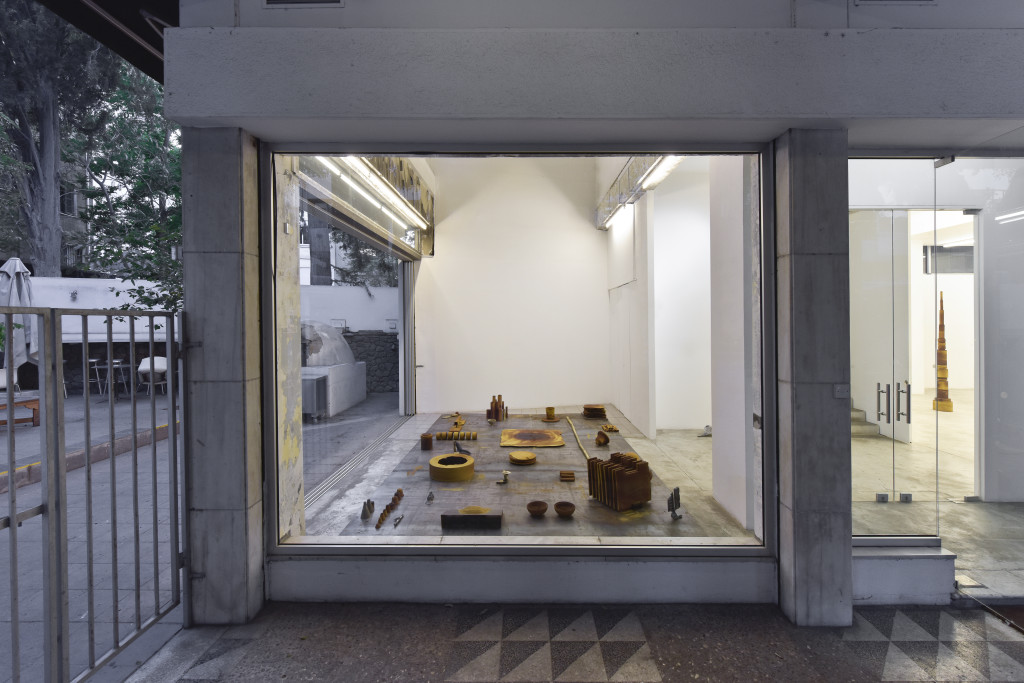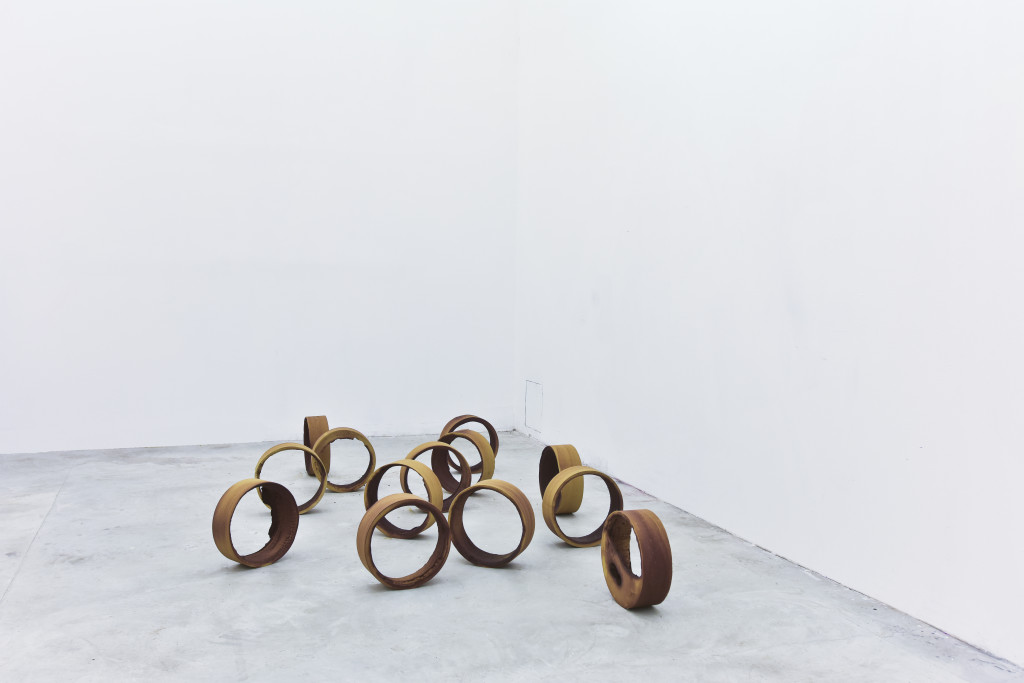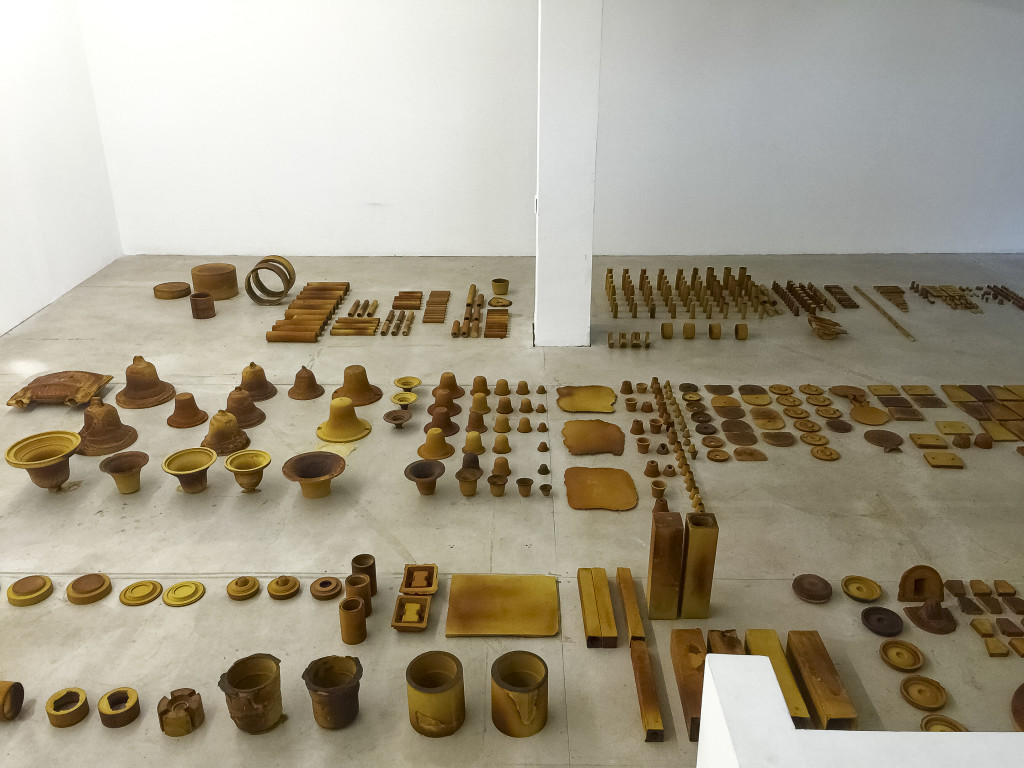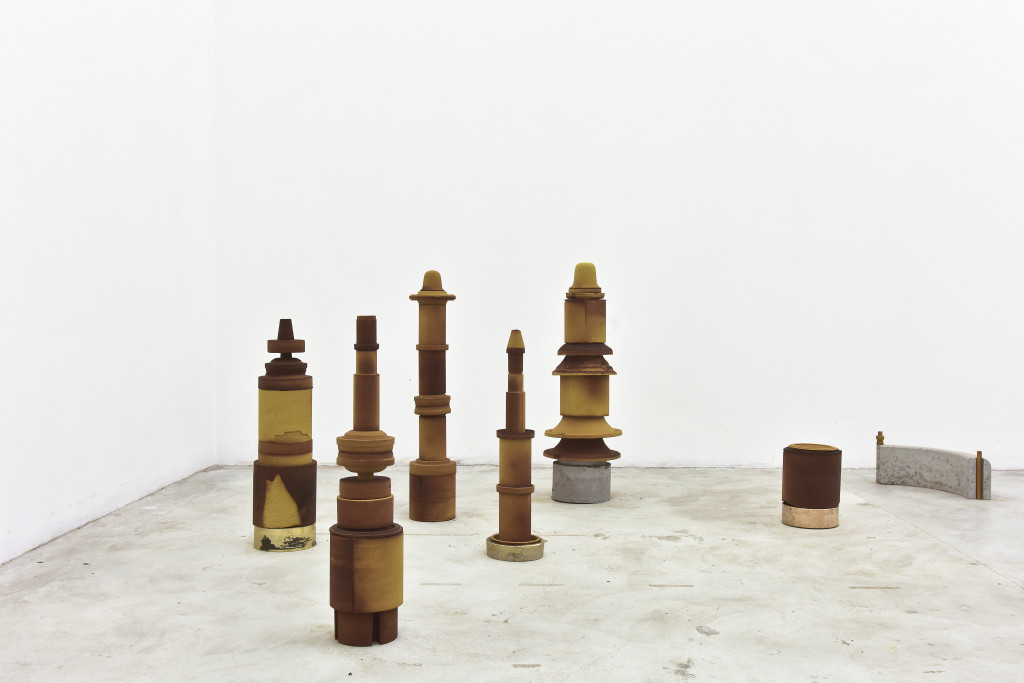Socratis Socratous: Point Centre for Contemporary Art
by Kostas Prapoglou
Conveying cogent metaphors of an island’s historico-political mythologies, Casts of an island (2016), is the solo exhibition by Cypriot-born, Athens-based artist Socratis Socratous, currently on view at Point Centre for Contemporary Art in Nicosia, Cyprus. Rendering the debris of a unified landscape disengaged from physical borders and manmade restraints, the exhibition is inspired by the artist’s Cypriot roots, and ongoing issues closely associated with the island’s complicated political and diplomatic context. Transcending ideas appropriated to loci of analogous geopolitical status, Socratous’ visual language surveys notions of displacement, national and cultural identity, socio-economic and historical discourse to challenge the topical subject of migration and the shifting ideologies recurring in today’s political habitat.

The context is applicable not just in Cyprus, but also to many places in the world, an amalgamation of some 500 sculptures of variable dimensions are dispersed throughout the large gallery space. Poetically archiving the remnants of parallel trajectories, Socratous’ installations laboriously fabricate an index of collective memories imbued through the domain of nostalgia and conscious mindset.
Socratis Socratous discussed his work and current exhibition with Staff Writer Kostas Prapoglou—a transcription of their conversation is below.
Kostas Prapoglou: Your visual lexicon engulfs notions of identity, displacement, migration as well as sociopolitical parameters. When and how did you begin to utilize these influences within your work?
Socratis Socratous: I would say the exploration of these notions surfaced rather early and in an almost effortless manner within my work. Having been born and raised in Cyprus, the sociopolitical environment was such that I became invariably influenced by it. Then came Athens, the city I chose to live and work in to this day, where it comes as no surprise that all these influences derived from the core of my oeuvre and, surely, my visual lexicon and artistic practice. For example, I participated in the 2002 Tirana Biennale representing Greece, during a heavily turbulent political period for the Balkans with refugees flooding in from the Balkan region, as well as many political asylum seekers from Iraq. It was an era that presented a fertile ground for me to further address these themes as an artist.
2003 was the defining year that shaped the course of my work, when I got the chance to revisit Cyprus as soon as the borders were partially lifted, and the opportunity to see the other half of the island became possible. It stemmed primarily from a deep desire to see my birthplace in its entirety for the first time. This turned into an almost decade long artistic journey that led to a substantial body of work.
What is fascinating about all these notions is the way in which the public and artistic discourse around them has evolved over the years. Perceptions are challenged and, perhaps now more than ever before, we are witnessing the true universality of issues such as that of displacement and the current refugee crisis. It can be said that these are no longer confined to a local context because we are exposed and influenced by them day in and day out via all social media outlets. This is fundamentally re-shaping the way we relate to it. Ultimately as far as my own work, it seems like it is always been an inevitable preoccupation.

KP: To what extent is the redefinition of memory and socio-cultural identity embedded in your oeuvre?
SS: I would hope that both can be traced throughout my work – in ways literal or a little more abstract. As I understand it, both the redefinition of memory and all these issues of a socio-cultural identity, are inexorably connected to the themes I seek to explore each time. I have a natural inclination towards revisiting these notions, precisely because I’m intrigued by how time plays such an integral role in the gradual re-shaping of perceptions. With each challenged connotation a new approach emerges that might be resonant to me as an artist. And coming from a country whose own identity crisis invites so many interesting questions, I find that entering the murky waters of memory and identity is both a compelling and necessary practice.
KP: Your artistic expression is known to provoke and stimulate your audience often with the employment of diverse conceptual meanings. A great example is the controversy created around your 2009 Venice Biennale participation for the Cyprus Pavilion. Tell us about this.
SS: It is not really my intention to provoke or create controversy around my work. To stimulate an audience yes, but even from a more personal perspective, I would say I am geared to the opposite of provocation, in fact I find it rather anxiety-inducing. Sometimes though, the nature of conceptual art is such that it begs for an audience to see beyond what meets the eye. For any viewer prepared to understand what propelled the work and the mechanisms behind the artist’s involvement, I think my intentions and the ideas I engage with are fairly transparent.
With respect to my national participation in the Venice Biennale in 2009, I represented Cyprus with an installation titled Rumors (2009). In retrospect, I can see how some of the work’s elements and symbolism could be misinterpreted as having been deliberately inserted to provoke. It started with a strong pushback from Cyprus ranging from the Ministry of Defense and Ministry of Culture to the Ministry of Foreign Affairs; and it took a lot of back and forth in order to get the project off the ground and bring it to Venice unhindered and as it was envisioned. For example, there were negative reactions about one of the two videos in which I interviewed the Turkish Cypriot businessman who imported the palm trees in Cyprus, because one would enter the Cyprus Pavilion and hear Turkish being spoken, rather than Greek. In fact, Turkish is the language most Turkish Cypriots speak. It’s also one of the island’s official languages alongside Greek.
In so far as I am concerned, for any work that can be called political one has to be very aware of where the limits are. It’s a process that involves a great amount of research and thorough knowledge of the subject you are addressing because it touches upon some very sensitive issues, namely human pain. A work of art isn’t just a product of the artist’s inspiration and mood, but rather requires an almost mathematical approach in tackling all the technical issues before you can feel it’s complete. Rumors for instance, involved so many elements: a palm tree on a boat wandering around the Venice canals every day, 45 demonstrators around Venice, cobra snakes that had to remain in the Cyprus Pavilion for six months, and a performance by two Indian snake-charmers. Again, there was a lot of Biennale pushback and a reluctance to grant me all the necessary permissions to deliver my vision for the work. The palm trees were a special Egyptian type that I had a lot of difficulty bringing over due to restrictions on imports from African countries to Europe. It all required a lot of negotiating and a few too many bureaucratic procedures. In the process of creating it, I also spent about six months training with a herpetologist, in order to secure a government license from the Ministry to possess cobra snakes. You could even see the issued license hanged by the entrance to the Pavilion.

KP: How do you feel that this experience has helped you evolve as an artist up to the present day?
SS: One way or the other, most of my work has helped me evolve as an artist. I am very conscious about engaging with subjects that are not necessarily familiar to me; in fact, I have an instinctive inclination towards exploring them without usually possessing any knowledge beforehand. It is a process that necessitates extensive field research to develop and expand the scope of the work, and by the end I will hopefully feel somewhat enlightened about it. I feel very strongly about this because I really think it adds to the ethos of the work.
By now, another inevitable side effect of my line of practice is that in proceeding with every work, I am sooner or later irrevocably bound to need to secure licenses and permissions just like in the Venice Biennale, from authorities or other organizations such as the UN, various government departments or the Army. Even for one of my latest projects, the Stolen Garden (2014), a work inspired by the National Garden of Athens that was nominated for the latest DESTE Prize 2015, I still had to get a number of permissions to carry it through. As an artist, this sometimes makes me reflect upon this veil of ostensible freedom of our expression, when it can on so many occasions be lifted under many pretexts.
KP: What impact do you envisage your work to have on the viewer? Has it ever been misunderstood?
SS: I feel that from the onset of each work of mine, I get so deeply involved in it that when the time comes to complete it and let it communicate to an audience, in a way I fall out of the picture and my involvement ends then and there. In so far as I am concerned, I never really know the final shape and form of the work even after I’ve finally reached the point of its completion, and thus I invite any interpretation of it with a total openness and understanding.
Like any artist, of course I would love for my work to have an impact on an audience. But at the same time I welcome any readings of my practice as if I’m about to start a dialogue with the viewer.

KP: How did your collaboration with Point Centre for Contemporary Art in Nicosia come about and how did Casts of an Island emerge in relation to the local context?
SS: Casts of an Island came from a residency in Cyprus at the Point Centre for Contemporary Art, one of the few non-profit art spaces out there. I got to spend three months in Nicosia and had a real chance to observe how time has been shaping the island’s recent history. It’s been more than ten years since the country joined the EU and the borders have been lifted, without as of yet any real political solution having been found.
Casts of an Island emerged as a somewhat poetic and abstract name for the work. Once again, I am influenced by the geographical position of Cyprus and its history; an island at the edges of Europe and across the Middle East. To locate the island on the map, to ask ‘where is Cyprus?’ raises another question: on which criteria can we base a clear distinction between Europe and the Middle-East?
The work itself is a series of sculptures and installations. The colours used exude images of the sandstorms that sweep the Mediterranean regardless of borders, or old buildings that have been erected both in the North and in the South of Cyprus. It’s an assortment of crumbling items made of sand; the process of creation was an experience that very much felt strongly reminiscent of the long time I spent in the South part of Palestine near Gaza, during the Qalandiya International in 2012. It was an intense and incredibly rewarding experience. As different as both territories may be, the comparisons are strong when you reflect upon the existence of borders and their presence all over the world. These places of conflict create an even stronger desire to understand the land. And to exist within it.
Socratis Socratous, Casts of an Island at Point Centre for Contemporary Art, Nicosia, Cyprus runs through July 16, 2016.